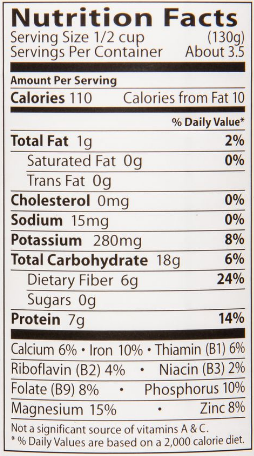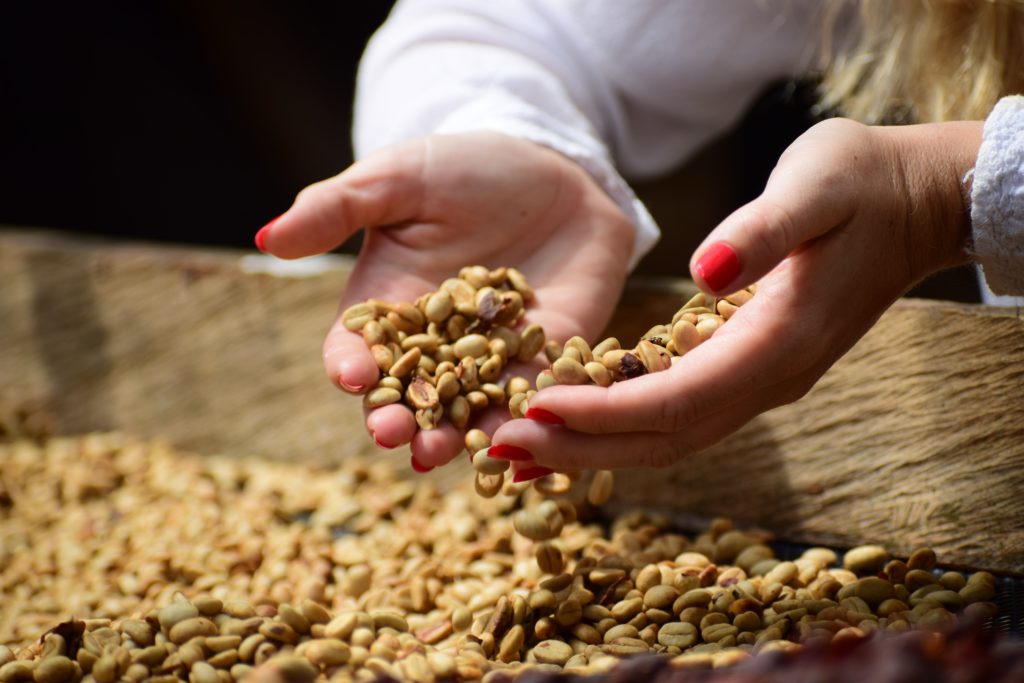If you’re unfamiliar with the best method for cooking dried beans, it’s pretty simple. Place the beans in a pot and cover them with three inches of water. Sprinkle them with salt and add any aromatics you may have – including the less expected ones like leek trimmings and fennel. Some herbs, such as rosemary or sage, are particularly good with beans. And soaking them is an excellent way to ensure they’re fully cooked.
Dried Beans Nutrition Facts
Dried Beans
Dry beans are grown in pods and are part of the legume family of plants. A legume is a type of plant that produces seeds in a pod (fruit). Beans are distinguished from peas and lentils by their physical shape. Beans are typically kidney or oval in shape, peas are round, while lentils are flat discs. The most common dry bean species grown in the United States is Phaseolus vulgaris, or common bean. Beans that are dry-packaged in sealed bags and sacks or rehydrated and pre-cooked in cans are referred to as “dry beans.” Pinto, navy, kidney (dark and light red), and black beans are popular dry beans. Dry beans do not include green beans, string beans, or soybeans.
Best Method For Cooking Dried Beans
Here is the best method for cooking dried beans:
Soaking Beans
Soaking beans causes the dried beans to absorb water, causing the starches that cause intestinal pain to break down. While the beans are soaking, they will double to triple in size. (Lentils, split peas, and black-eyed peas do not require soaking.)
Remove any discolored or shriveled beans, as well as any foreign debris from the beans. Rinse the beans thoroughly. Soak beans using one of the following methods:
Soak in a hot tub. Pour 10 cups of water into a big pot for every pound (2 cups) of dried beans. Bring to a boil and cook for 2–3 minutes. Remove from the heat, cover, and set aside to soak for up to 4 hours. Because it decreases cooking time, helps dissolve some of the gas-causing chemicals in beans, and reliably delivers soft beans, hot soaking is the favored method.
Soak in a hurry. This is the quickest option. Pour 6 cups of water into a big pot for every pound (2 cups) of dried beans. Bring to a boil and cook for 2–3 minutes. Remove from the heat, cover, and set aside to soak for at least 1 hour.
Overnight Soak is a time-honored tradition, and this is the most straightforward technique. Add 10 cups of cold water to each pound (2 cups) of dry beans in a big container. Refrigerate for 8 hours or overnight if covered.
Cooking Beans
The beans become edible and digestible once they have been cooked. Use cooked beans in your favorite dishes, or store them in shallow containers in the refrigerator if you plan to consume them later. Any leftover beans should be frozen within four days of being cooked. Beans can be cooked on the stovetop or in a pressure cooker/multicooker.
In a big pot, place the beans, fill them with new water, and bring them to a boil.
Reduce the heat to low, cover, and cook until the beans are cooked but firm. Most beans will cook between 45 minutes to 2 hours, depending on the type. Try a taste test or regularly crush a bean against the pot’s side with a fork or spoon. Check to see whether you need to add more water regularly. Here are some estimates for bean cooking times:
Multicooker/Pressure Cooker Instructions
To discover more about specific cooking suggestions for your model, consult the manufacturer’s instructions. The following are some general guidelines:
Fill a pressure cooker halfway with new water and add the beans. Make sure the beans are submerged in about 2 inches of water.
Cook according to the manufacturer’s directions after sealing the pressure cooker. Depending on the variety, adjust the cooking time as needed. Longer cooking time results in softer beans, and tender but not mushy beans are ideal.
After cooking, allow 20 minutes for natural pressure release. If the beans aren’t quite tender, cook them for another 10 minutes under high pressure, then quickly release the pressure. Drain immediately.
Is It Healthy To Eating Beans?
Protein
Protein is an essential ingredient that helps the body maintain and repair itself. Amino acids, the building blocks of protein, are abundant in beans. There are 20 amino acids in all, with nine essential. Complete and incomplete protein sources are also available. Complete proteins contain all nine essential amino acids, such as animal products, soy, and quinoa. Only soybeans, out of all the bean varieties, have nine amino acids. Complete proteins can be made by combining incomplete proteins with nuts, seeds, dairy products, or grains at a single meal or over the day.
Folate
Beans are high in folate, which is an essential nutrient. Folate is necessary for overall health, the production of healthy red blood cells, and the prevention of neural tube abnormalities in a developing fetus during pregnancy.
Antioxidants
According to research Trusted Source, beans are high in polyphenols, which are a sort of antioxidant. Antioxidants counteract the negative consequences. Free radicals, which are harmful molecules produced by the body during metabolism and other activities, are a reliable source. Free radicals can damage cells, resulting in a variety of disorders. Antioxidants aid in the removal of free radicals from the body. Antioxidant-rich foods, such as beans, can help the body fight sickness in this way.
Heart health
Bean eaters may have a lower risk of dying from a heart attack or other cardiovascular issues. The authors of a meta-analysis published in 2017 One reason for the drop in cardiovascular risk, according to Trusted Source, is that consumers have replaced higher fat animal flesh proteins with beans. According to reasearch, a meta-analysis and review published in 2013 eating beans are linked to a lower risk of coronary heart disease. According to other research, the minerals in beans may help decrease cholesterol. Heart disease and heart attacks are linked to high cholesterol levels. According to evidence rested Sources, a high fiber diet may help reduce the risk of cardiovascular disease.
Reduced risk of cancer
Beans have been demonstrated in several tests to be antioxidants and anti-inflammatory agents, and these effects may help lower cancer risk. Beans were studied in 2015 to see if they had antioxidant characteristics that could help combat intestinal cancer. According to the findings, black beans showed the highest antioxidant activity. According to a 2016 study, compounds discovered in Northeast China black beans can inhibit the progression of colorectal cancer by blocking cancer cells from growing.
Diabetes and glucose metabolism
Beans may aid in the stabilization of blood glucose levels or possibly the prevention of diabetes. Beans have a lot of fiber, which can help reduce blood sugar levels. According to the author of a 2018 review, eating a high-fiber diet can lower the risk of type 2 diabetes. There was also evidence that it could assist persons with diabetes in managing their blood sugar levels. Another study looked at the impact of including a cup of beans in persons with type 2 diabetes’ daily diet. In this study, the group that ate beans had lower blood sugar levels and blood pressure than the control group that ate whole wheat fiber.
Controlling appetite
Beans contain fiber and healthy carbohydrates, which can help a person feel full and satisfied after eating them. According to a 2013 study, this could assist avoid overeating and lead to weight loss as a long-term dietary strategy.
Side Effects Of Dried Beans
Beans and other legumes can cause allergic reactions in certain persons. Peanuts and soy are two of the most prevalent allergens. Those who are allergic to one type of bean should be cautious when eating others. Lectins, which are potentially hazardous to humans, are found in many beans and pulses. Lectin concentration is reduced by soaking and boiling beans.
To guarantee that beans are safe, they should be boiled for at least 10 minutes. Gas and digestive pain are the most prevalent adverse effects of eating beans. Although they can be bothersome and even painful for some people, these are not harmful. When adding beans to one’s diet, one should gradually increase the amount to allow the gut to acclimate.
Conclusion
The best method for cooking dried beans is to soak them overnight. Then, add fresh water to cover the beans by two inches. Never boil the beans because it can lead to mushy beans and uneven cooking. A few hours of soaking is usually enough to cook dried bean varieties. For most types, a day or two of soaking is sufficient. But if you’re experimenting with recipes, you can also try other methods.



